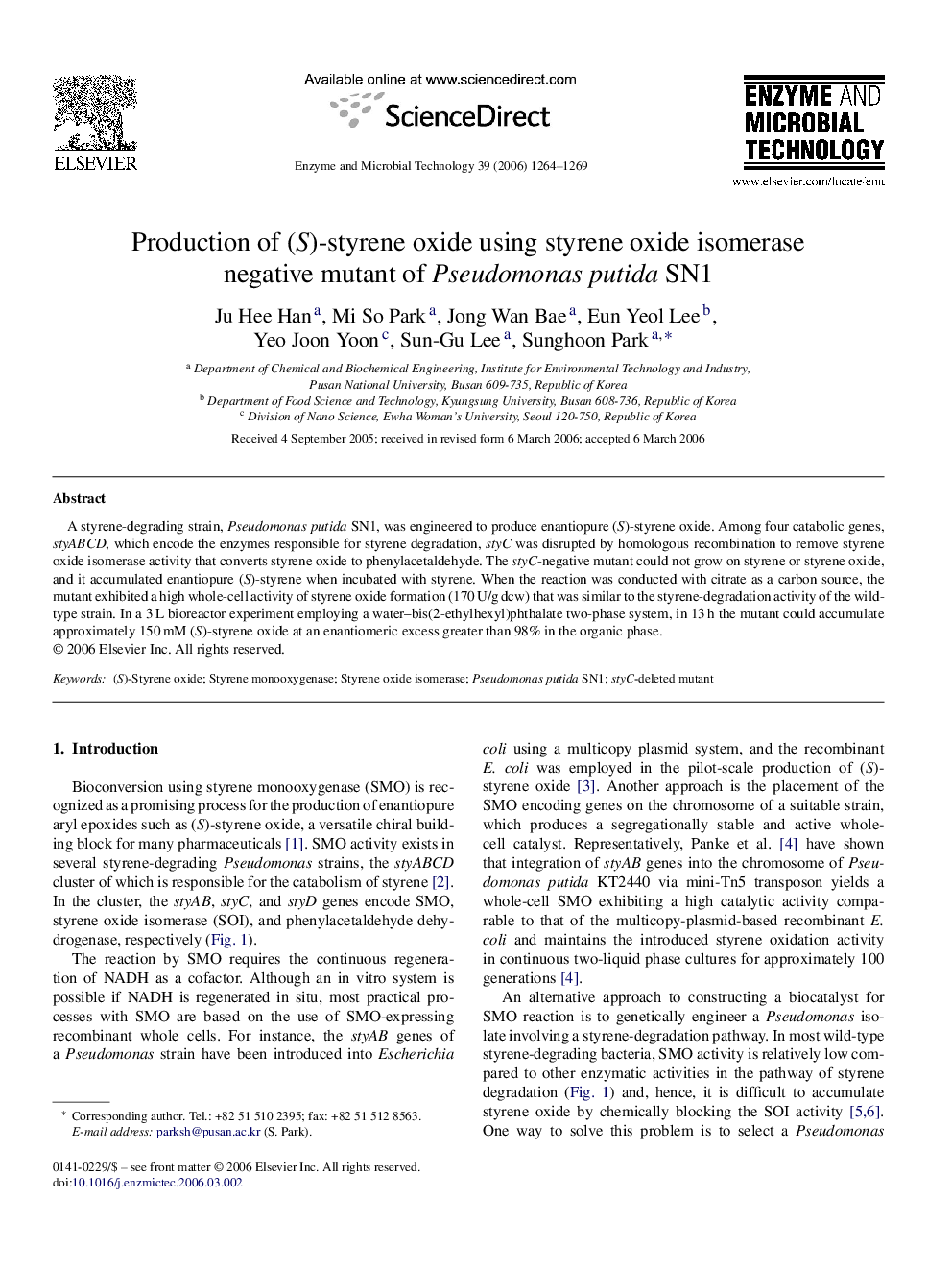| Article ID | Journal | Published Year | Pages | File Type |
|---|---|---|---|---|
| 18347 | Enzyme and Microbial Technology | 2006 | 6 Pages |
A styrene-degrading strain, Pseudomonas putida SN1, was engineered to produce enantiopure (S)-styrene oxide. Among four catabolic genes, styABCD, which encode the enzymes responsible for styrene degradation, styC was disrupted by homologous recombination to remove styrene oxide isomerase activity that converts styrene oxide to phenylacetaldehyde. The styC-negative mutant could not grow on styrene or styrene oxide, and it accumulated enantiopure (S)-styrene when incubated with styrene. When the reaction was conducted with citrate as a carbon source, the mutant exhibited a high whole-cell activity of styrene oxide formation (170 U/g dcw) that was similar to the styrene-degradation activity of the wild-type strain. In a 3 L bioreactor experiment employing a water–bis(2-ethylhexyl)phthalate two-phase system, in 13 h the mutant could accumulate approximately 150 mM (S)-styrene oxide at an enantiomeric excess greater than 98% in the organic phase.
